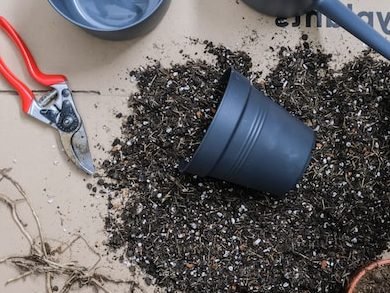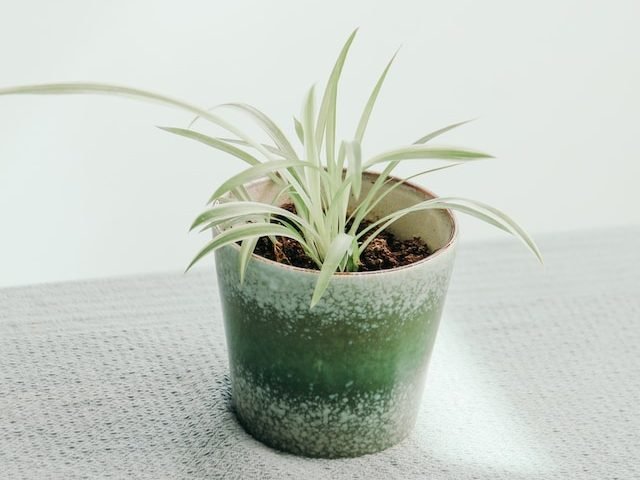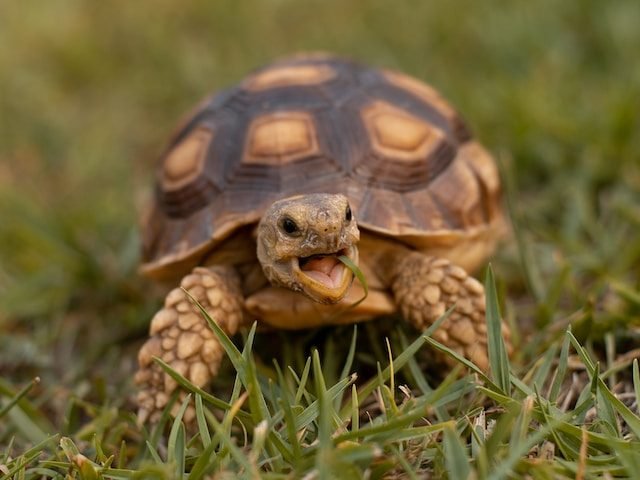
There is little more frustrating than finding your Philodendron Squamiferum struggling to survive but having absolutely no idea what is causing it.
This can be made even worse by the fact that pretty much every issue can be caused by a whole range of different factors, making the diagnosis part a minefield. But don’t worry, you’ve come to the right place when it comes to treating common Philodendron Squamiferum problems.
Below you’ll not only find out how to diagnose each of the issues but also details on treating and preventing the issue so you can get your Philodendron Squamiferum back in tip-top shape.
Causes of brown Philodendron Squamiferum leaves
Underwatering is a common cause of brown leaves on a Philodendron Squamiferum.
Don’t worry if you forget the occasional watering, but consistent underwatering can cause some real issues. To confirm the issue, take your plant out of its pot to check the potting mix and root system.
If it’s bone dry and the roots look crispy, then underwatering is the most likely culprit of the brown leaves on your Philodendron Squamiferum. The best way to fix your underwatered Philodendron Squamiferum is to water your plant a little bit once a day for about a week.
This will help to gradually reintroduce water without causing shock by changing the environment too rapidly. We recommend buying a moisture meter to help you keep an eye on when your Philodendron Squamiferum needs more or less water which will help to avoid brown leaves in future.
Overwatering can also cause brown leaves.
Whilst they won’t die suddenly if you overwater them once in a while, consistent overwatering will mean it will start to develop root rot. This will cause your Philodendron Squamiferum to develop brown leaves that are soft to touch. If the potting mix is waterlogged, then it is best to replace the soil straight away rather than just sit and wait for it to dry up over time.
This allows your plant to begin the recovery process. Moving forward, to prevent more brown leaves, cut back on either how much water you give your plant or how frequently you water it. Make sure to check the moisture levels in the soil using a moisture meter before you water so that you can monitor how long it takes for the soil to dry out.
Low humidity can cause brown leaf tips.
If your Philodendron Squamiferum has brown and dry leaf tips or leaf edges, then humidity may be the problem. Philodendron Squamiferums like a good humidity level and will struggle in homes that have quite dry air.
This problem is a lot more common in winter as heating and less ventilation can mean the air in your home dries out a lot quicker. Misting your plant using a spray bottle or buying a humidifier are the best ways to consistently increase the humidity for your plant and stop any more brown leaf tips from occurring.
Causes of yellow Philodendron Squamiferum leaves
Overwatering is a common cause of yellow leaves.
Philodendron Squamiferum plants don’t like sitting in puddles of water for long periods of time. This will cause damage to the root system and mean your plant will develop yellow leaves, as well as become soft and eventually also fall off your plant.
To check if you have been overwatering, check the moisture levels in the soil immediately. If the soil is quite waterlogged and clumpy then replace it with fresh dry mix and trim off any rotten roots.
To prevent yellow leaves from reoccurring, adjust your watering schedule so you aren’t watering your Philodendron Squamiferum as much as you were before and make sure to cut back during winter when your plant is more dormant.
Sunburn.
Another cause of yellow leaves on Philodendron Squamiferum plants is too much direct sunlight. This is most commonly an issue in summer as the sun is a lot stronger and out for more hours in the day.
Unfortunately, once the leaves on your Philodendron Squamiferum are yellow and burnt from the sun there is no reversing that. Trim off the worst-affected yellow leaves and move your Philodendron Squamiferum to a shadier spot, away from any direct sunshine.
You might need to get into the habit of moving your Philodendron Squamiferum around depending on the seasons to ensure it is getting the right level of sunlight.
Natural yellowing is nothing to worry about.
As your Philodendron Squamiferum matures, it may occasionally lose a leaf as part of the natural ageing process. Before dropping the leaf, it can happen that it turns yellow first as it starts to die.
There are a few ways to spot natural yellowing; firstly, if your plant is losing the lowest, oldest and smallest leaves and secondly if the rate of new healthy growth is faster than the rate of yellowing. There is no harm in giving the soil and your plant’s environment a once-over to check for any other potential issues.
Philodendron Squamiferums start losing leaves for a variety of reasons
Shock and stress.
Much like humans, houseplants can get pretty shocked or stressed if their environment changes suddenly. Things like repotting, propagating or moving to a new spot can cause your Philodendron Squamiferum to get a little shocked and drop a few leaves.
As long as the current or new environment is right for your plant, this isn’t anything to be concerned about and simply means that your Philodendron Squamiferum is adjusting.
After a week or so, you shouldn’t see your Philodendron Squamiferum losing any more leaves. Using a light meter and digital thermometers are great ways to check the environment.
Cold temperatures can also result in your Philodendron Squamiferum losing leaves.
Cold drafts coming in through windows, external doors or air conditioning vents can be pretty harmful to your Philodendron Squamiferum over time.
Whilst they won’t die on you from one day to another, if the issue persists they will start by losing a few leaves. The ideal temperature for Philodendron Squamiferum is between 18°C – 24°C, so it shouldn’t be too difficult to keep in a good range.
You can always pick up a digital thermometer to check the spot your Philodendron Squamiferum is growing in to make sure it’s right.
Natural shedding.
If you have gone through all of the above but none of it really fits what is going on with your Philodendron Squamiferum then it may simply be natural ageing that is causing your plant to be losing leaves.
As we mentioned above, over time it’s totally normal for your Philodendron Squamiferum to drop some of its oldest leaves as it focuses on new bigger growth. These old leaves will often turn yellow before falling off the plant.
Do keep an eye on how often your Philodendron Squamiferum is losing leaves as if the rate speeds up then you need to check your plant over again to spot any of the signs we listed above.
Why does my Philodendron Squamiferum have curling leaves?
Underwatering can result in curling leaves.
When plants need to reduce the water loss through their leaves they begin curling them which is why underwatering is the first port of call to diagnose this issue. Check the potting mix over and adjust your watering schedule accordingly.
Low humidity can also result in curling leaves.
It might not be your watering schedule that is leading your Philodendron Squamiferum to start curling its leaves to reduce moisture loss but actually dry air in the room.
The best way to diagnose this is to use a humidity meter as it’s not something we can accurately measure without.
If humidity is the issue, then start by misting your plant and investing in a humidifier. Luckily, curling leaves are an early warning sign and are also reversible so you shouldn’t see any permanent damage if you’ve caught the issue early enough.
Why is my Philodendron Squamiferum drooping?
Underwatering can cause your Philodendron Squamiferum to start drooping.
This occurs commonly on plants with long stems as they need to carry the weight of the leaves which is why it can be quite common with Philodendron Squamiferum.
If you find that the stems and leaves look a little lifeless, it is most probably because the soil has been too dry for too long. Stick a finger in the top few centimetres of the soil to check the moisture levels.
To stop your Philodendron Squamiferum from drooping, reintroduce frequent but light watering each day for a week or two and this will help prevent environmental shock.
Overwatering can also be the cause.
Once the roots on your plant have begun to rot, it can cause the stems and leaves on your Philodendron Squamiferum to start drooping. This is because they aren’t getting enough moisture, nutrients and oxygen from the damaged root system.
It also means that the roots can’t physically support the plant anymore and it’ll start to hang and droop down. The combination of these two issues is why overwatering causes your plant to droop.
If you think your Philodendron Squamiferum might be suffering from overwatering and root rot take your plant out of its pot immediately and inspect the root system, checking for waterlogged soil and black mushy roots. Over the next few weeks, only water your Philodendron Squamiferum when the potting mix feels dry and hopefully your plant can begin to recover.
To avoid your Philodendron Squamiferum from drooping again in future, get into the habit of checking the moisture in the potting mix before watering your Philodendron Squamiferum. We recommend buying a moisture meter to make sure you are only watering your plant when it needs it.
You might find our Philodendron Squamiferum care guide useful to ensure your plant is getting what it needs to thrive!















